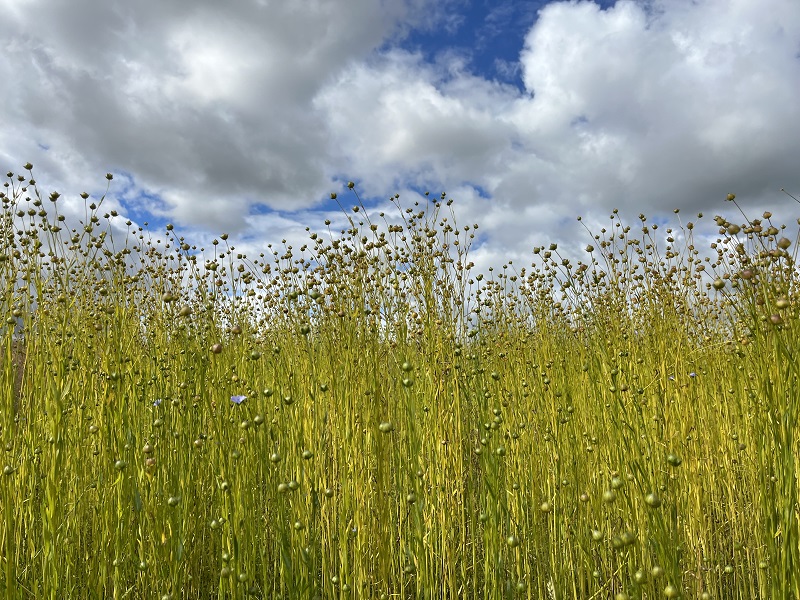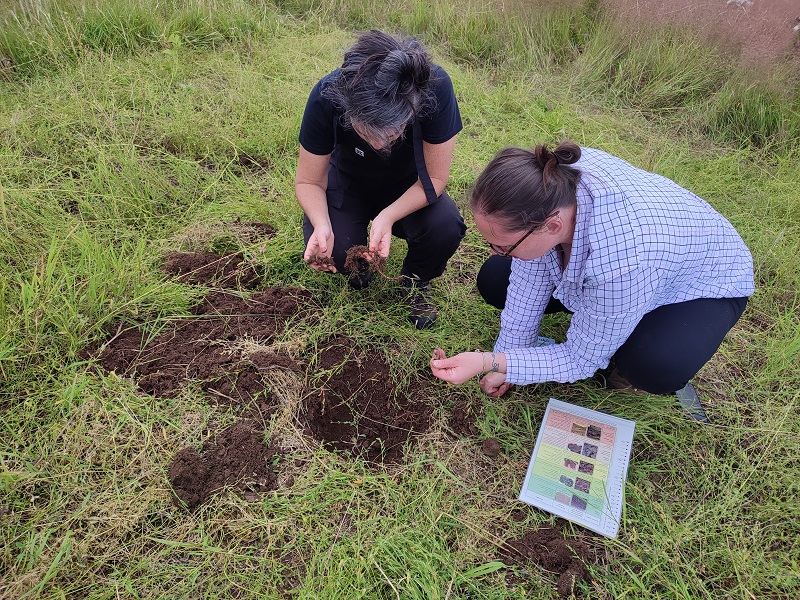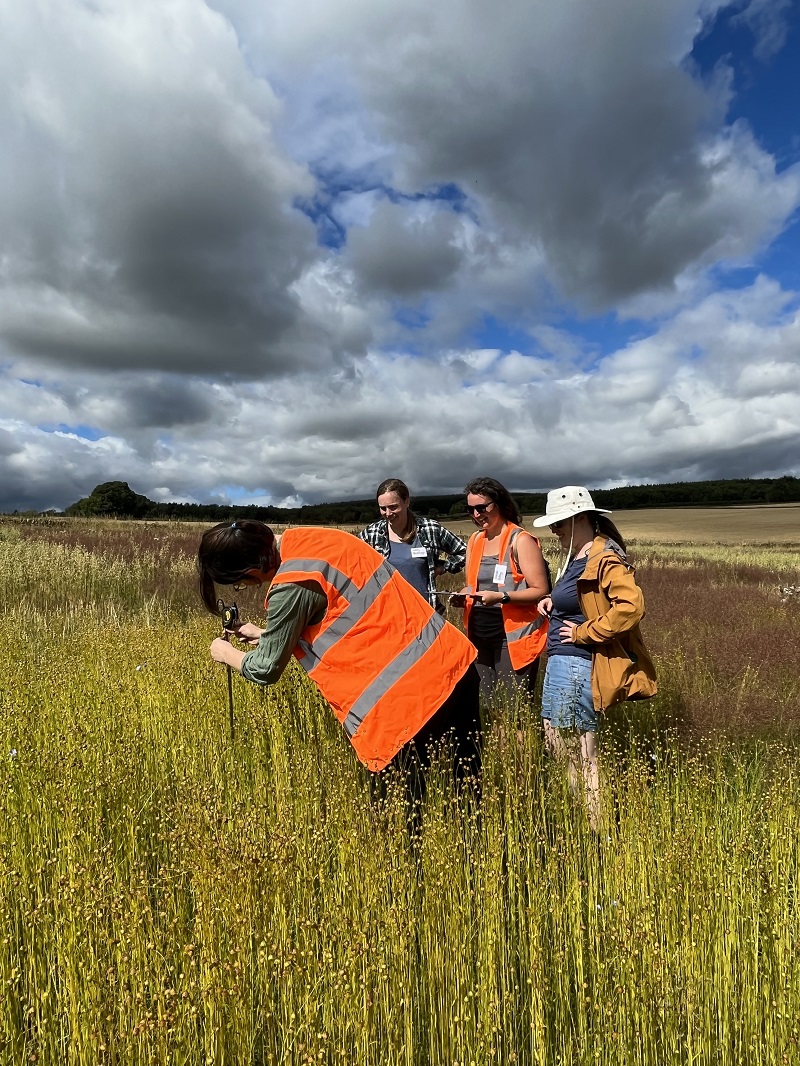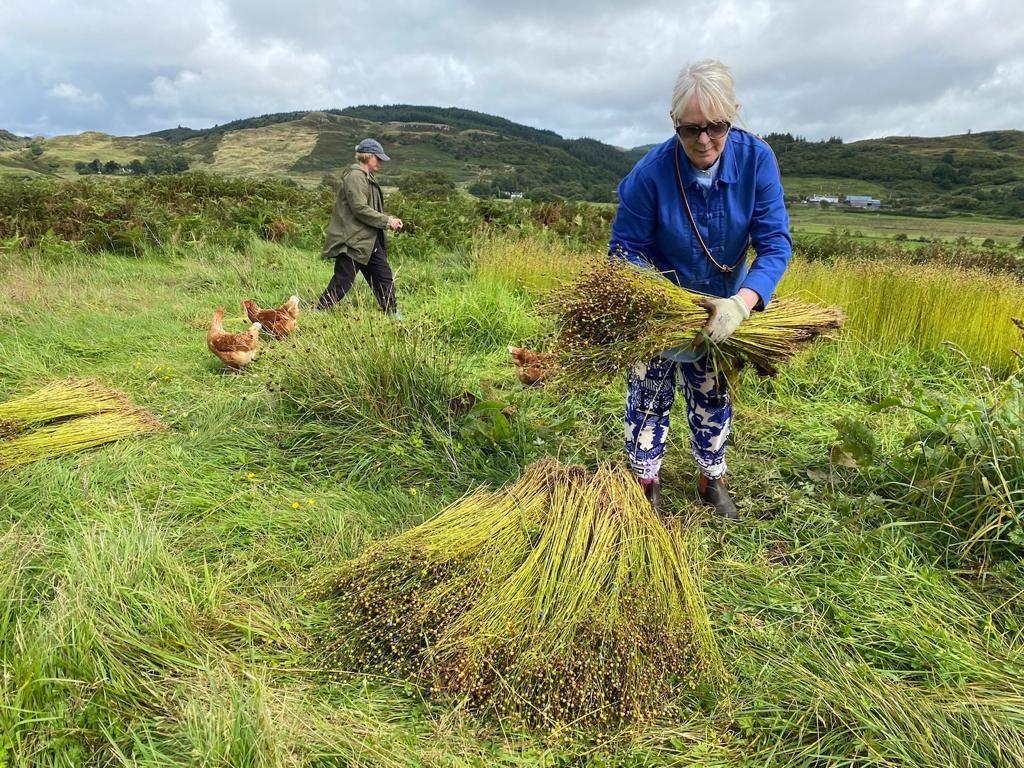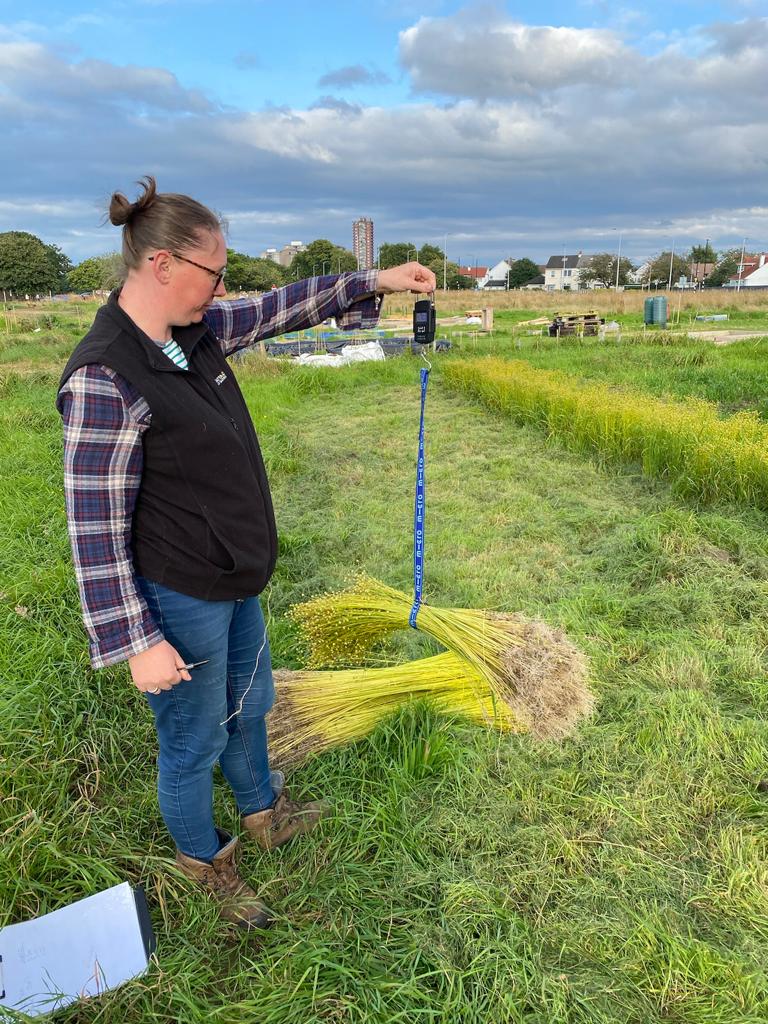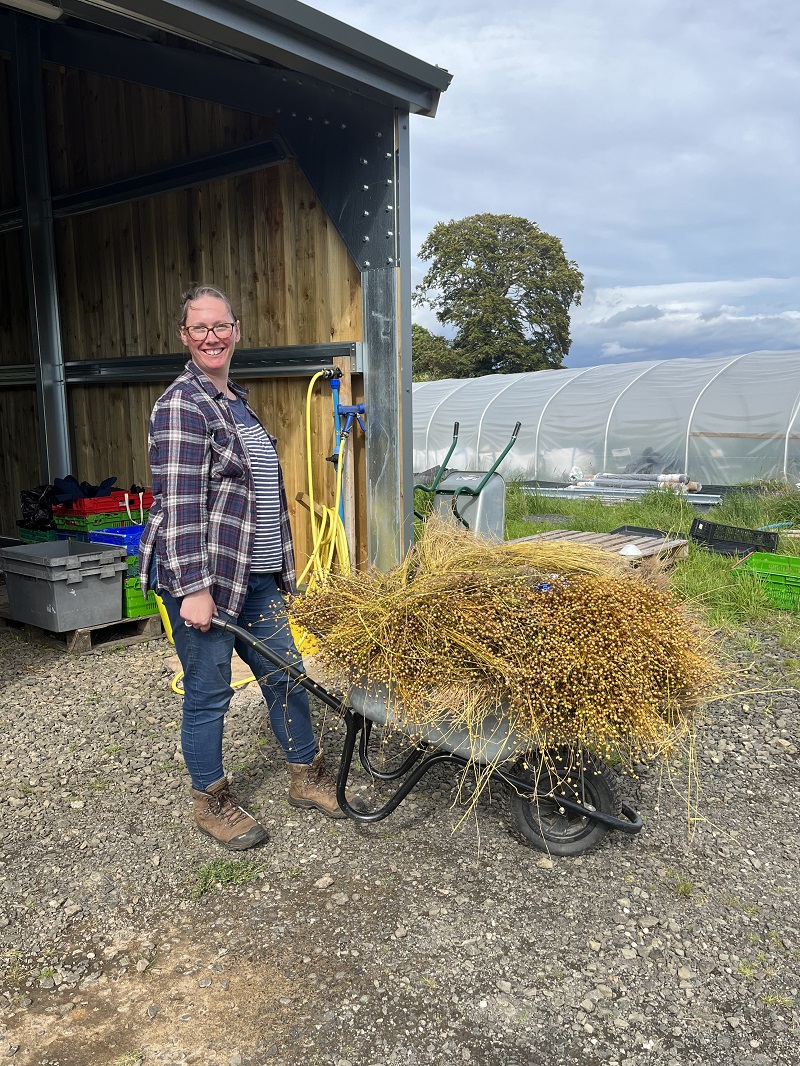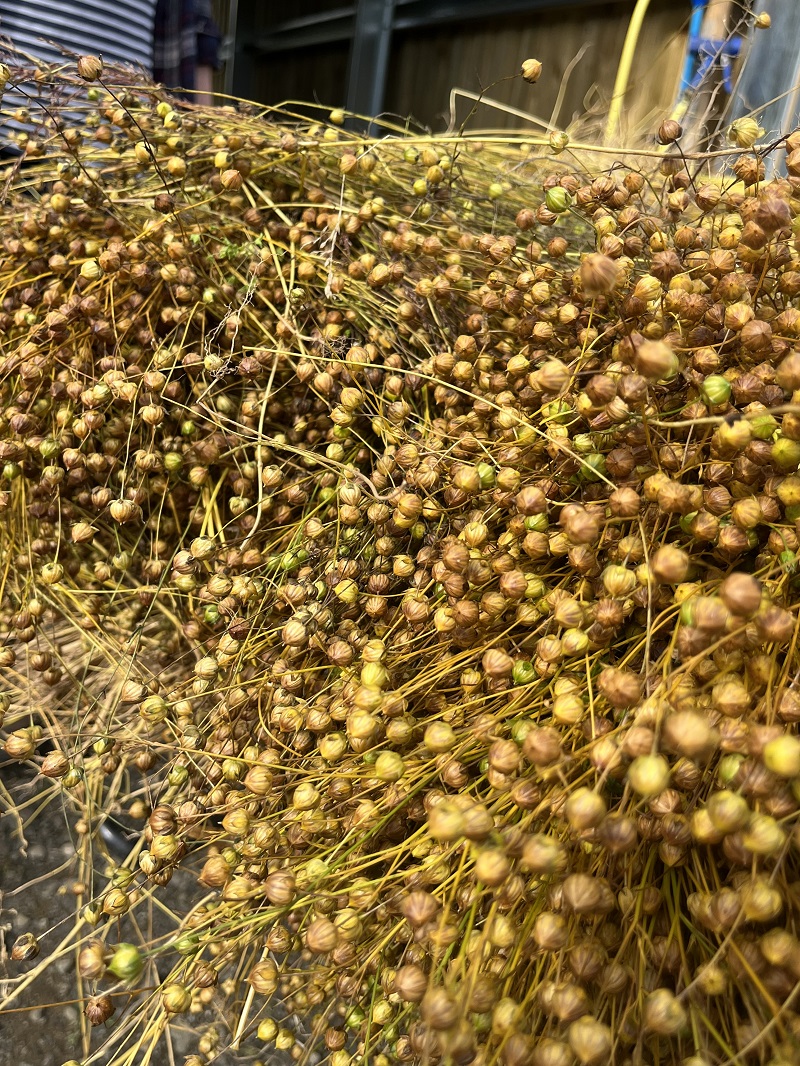Harvesting flax and the future of linen fibre in Scotland
Members of the Scottish fibre flax field lab have just finished harvesting the trial crop; this blog explores how it’s done and what observations the group have been making about which variety works best.
In this field lab, growers are aiming to rekindle the lost linen industry in Scotland. They are starting by comparing three imported Dutch varieties of fibre flax to see how well they are likely to perform in a commercial agricultural context and Scottish growing conditions. This feeds into the longer-term aim of building a practical knowledge base that we can share with a future network of fibre flax growers in Scotland (and the UK), whilst also supporting the development of a localised supply chain and markets.
Find out more about the flax field lab and the crop's environmental benefits.
How to harvest flax in Scotland
The flax has now been hand harvested on the three trial farms and took slightly longer than the recommended 100 days to mature. It is possible that drought in the spring/early summer and cooler temperatures in July may have affected growth and ripening.
The crop is ready to pull around 40 days after flowering, when the seed pods have changed from pale to brown and the stem has started to yellow. At this stage, the seed heads are not yet ripe but the flexible fibre in the stem is at its strongest for being processed into textiles. If over-ripe, the inner fibres break easily and become more difficult to process.
Plants are pulled by hand to ensure maximum fibre length, as the fibre extends down into the root. It is then laid out on the ground with roots at one end and seed pods at the other, in a process known as retting (old Scots word for rotting) – where soil microbes and moisture in the damp ground break down the lignins and pectins in the woody stem, allowing the flexible fibres to be extracted for processing.
After 10 to 20 days the crop is turned to allow the top layer to become damp and ret. The whole process is weather dependent and can take from two weeks to two months depending on conditions. When the crop is fully retted it needs to be dried and stored, ready to be processed and spun into yarn for weaving.
What was measured?
The main factors assessed were yield, crop height (which informs the fibre length), crop density (number of plants per plot) and crop weight (thicker stems might imply better quality fibre). A good crop would have tall, thick stems growing densely together.
We also wanted to know what factors may influence germination and growth (and whether this has a bearing to final yield), so recorded soil type, measured soil health and compared weed pressure.
Observations were also made of differing root structure – ideally as little soil as possible will come up with the roots.
Some initial observations from the harvest
Of the three varieties, one appears to have performed less well than the other two, growing consistently shorter and less dense across all three sites
- Weed pressures had a noticeable effect on crop yield
- In plots with heavy weed pressure, crop density and height were lower than weed-free plots
- Plots which previously had compost added produced taller and thicker plants
- Further patterns may emerge once the data is analysed.
Next steps in this field lab
- Retting and drying the crops for processing over the winter by Fantasy Fibre Mill and ECA textiles team/students
- Lab testing by Heriot Watt University
- Analysing data for results and recommendations
- Recruiting growers and planning for 2024
- Wider flax-growing/agronomy/industry/history research over winter
Aspirations for 2024
- Recruit more farm sites into a scaled-up trial
- Continue the community flax network and knowledge exchange on growing and processing flax into fibre
- Continue to collaborate to support the development of a Scottish processing and supply network
Aspirations beyond 2024
This Innovative Farmers field lab is the first small step in a process that project participants and collaborators hope will be the start of the development and re-establishment of a thriving sustainable textile economy in Scotland (and the UK). There is a growing network of actors contributing to this work (e.g. the newly-established Fibreshed Scotland, Fantasy Fibre Mill, farmers who are interested in growing flax on a commercial scale, Journeys in Design/Flax Futures); and we hope that by working together we can develop a sustainable Scottish textile industry which empowers everyone in the processing and supply network.
If you want to get involved in the future – contact info@innovativefarmers.org to find out the latest.
Who is involved in the field lab?
The initial core group of three farmers, researchers from James Hutton Institute and Edinburgh College of Art has grown throughout the project and now also includes 30 community growers and a growing network of collaborators including a flax to yarn processing mill start-up – Fantasy Fibre Mill, spinners, weavers, dyers, educators, crafters and textile researchers.
